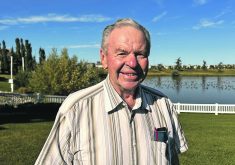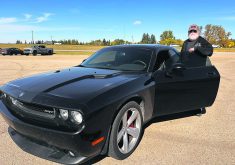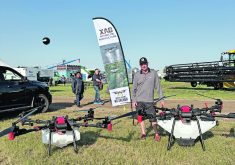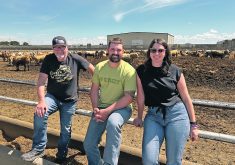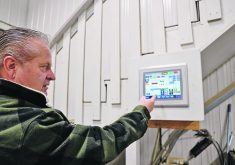It can take a great deal of work to figure out ahead of time what ‘living within your means’ will involve after retirement
Russell and Terri Bruce are excited about their farm auction this fall. After decades of farming near Tuxford, Sask., and their last harvest in 2019, the couple looks forward to closing their operation and spending more time with their grandkids.
To do that, planning their retirement, including their budget for the coming years, had to come first.
To be able to do what they wanted in their retirement required discussing their options with their two daughters and one son. Four- to six-hour trips cost money so that must be factored into the retirement budget, along with any other retirement plans.
Read Also

India slaps 30 per cent import duty on yellow peas
India has imposed a 30 per cent duty on yellow pea imports with a bill of lading date on or after Nov. 1, 2025.
For people who want to retire early, a solid plan might mean making sure they have income and money saved or investment to last them for the next 30 years, says Chris Veilleux with Prairie Wealth Planning Consultants Ltd. out of Brandon.
Related stories in this issue:
- Know what you want to get from retirement
- Retirement planning must start now
- Income can continue after retirement
- Call a financial planner before retirement
While most people know the phrase “living within your means,” many people don’t know what their means are, he says. Farmers working on retirement planning need to work on discovering what those means are and how that is going to impact their budgeting projections. Those means can change for working farmers as soon as they are no longer farming, says Veilleux.
When everyday gasoline costs are absorbed by the farm, how much will a farmer be paying out of pocket when the farm is no longer there? What other costs are being absorbed by the farm that farmers will forget about until the day after retirement?
Income and expenses obviously go hand in hand with budget planning and keeping those sustainable is key to ensuring a successful retirement.
Figuring out these expenses and income streams is one of the first steps forward in a financially stable retirement.
If that income is still going to be coming from the farm operation after that person has stepped away from it, discussion about what those income needs are must take place as part of the succession plan.
Knowing your retirement budget before the papers are signed helps by alerting you to the possible shortfalls that could mean the need for a more diversified income and investments you have to draw from later.
A financial planner can help build that income revenue to a sustainable level.
Living within their means goes beyond cost of living and day-to-day expenses, says Veilleux. He sees clients whose physical and mental abilities have been decimated with age. That’s a critical situation that people must prepare for when this is no longer a possible income source.
“If you’re getting yourself into a situation where you’re no longer reliant on your mind and your body to physically earn your income, it’s coming from investments, that’s coming from things that are now outside of your physical realm.”
This takes away the ability to go back to work if that becomes a financial necessity, says Veilleux.
As well, Veilleux says people must be prepared for fluctuations in their income and other factors outside of their control.
Inflation can play a role in the cost of living and return on investments. Even the rate of inflation can rise and fall over the years, says Veilleux, so he advised clients to make sure that their income has consistent growth of 2.5 percent every year of their retirement.
“(Inflation) is incremental over a long period of time and it doesn’t always go in an exact straight line. There might be a year where inflation numbers are lower, there may be a year when it comes up. We use a law of averages when we’re planning.”
Planning a budget for retirement can also mean budgeting before retirement, says Veilleux. Knowing your cost of living and making sure your income is keeping pace with your budget plans can mean more money saved for retirement long before the retirement discussion is taking place. Planning for end-of-life care, like long-term care facility costs and funeral expenses, takes discussing a person’s needs and wishes with their family and financial planners so that is included in their retirement budget, Veilleux says.
Some people are using things like disability, long-term care, and critical illness insurance. When a person is healthy they pay a premium so that the financial benefits are paid out later.
More and more of his clients are using these policies, says Veilleux, but for some people, the effectiveness of the premiums does depend on when they will start needing to activate that policy. In the end, paying the premium might not be as beneficial compared to saving the money in ways that provide them with a better return on their investment. Unfortunately for others, the premiums might not be a feasible investment.
“You’ve got people at different ends of the spectrum. If they’re of lesser income, it’s unfortunate, but a lot of times the premium becomes too expensive and people have to choose. If they just don’t have the means then they just have to take on that risk themselves.”
No matter what their retirement looks like, the Bruces feel secure in their retirement plan.




